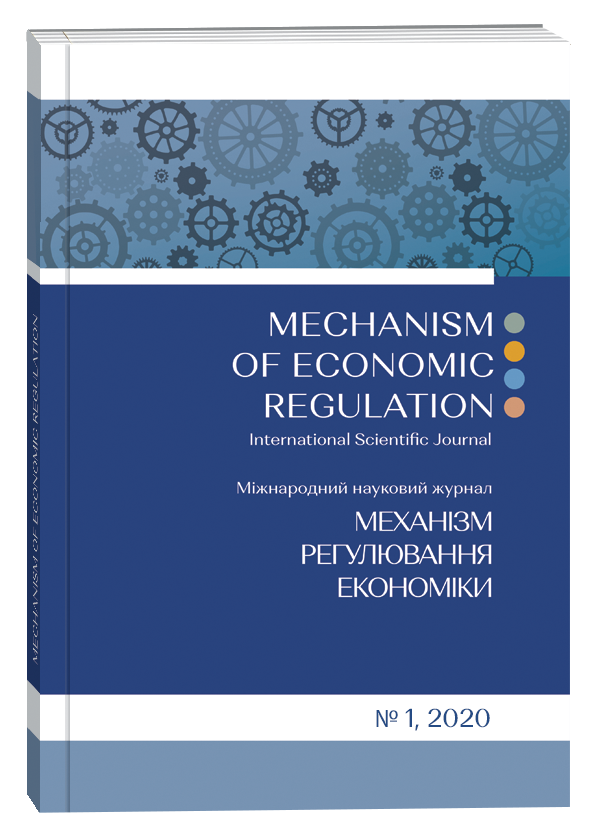ECONOMIC AND ENVIRONMENTAL ASPECTS OF SMART GRID TECHNOLOGIES IMPLEMENTATION IN UKRAINE
Abstract
Interruptions in electricity supply may have a series of failures that can affect banking, telecommunications, traffic, and safety sectors. Due to the two-way interactive abilities, Smart Grid allows consumers to automatically redirect on failure, or shut down of the equipment. Smart Grid technologies are the costly ones; however, due to the mitigation of possible problems, they are economically sound. Smart grids can't operate without smart meters, which may easily transmit real-time power consumption data to energy data centers, helping the consumer to make effective decisions about how much energy to use and at what time of day. Smart Grid meters do allow the consumer to track and reduce energy consumption bills during peak hours and increase the corresponding consumption during minimum hours. At a higher level of management (e.g., on the level of separate region or country), the Smart Grid distribution system operators have the opportunity to increase the reliability of power supply primarily by detecting or preventing emergencies. Ukraine's energy system is currently outdated and cannot withstand current loads. High levels of wear of the main and auxiliary equipment of the power system and uneven load distribution in the network often lead to emergencies and power outages. The Smart Grid achievements and energy sustainability are also related to energy trilemma, which consists of key core dimensions– Energy Security, Energy Equity, and Environmental Sustainability. To be competitive on the world energy market, the country has to organize efficiently the cooperation of public/private actors, governments, economic and social agents, environmental issues, and individual consumer behaviors. Ukraine gained 61 positions out of 128 countries in a list in 2019 on the energy trilemma index. In general, Ukraine has a higher than average energy security position and lower than average energy equity, and environmental sustainability positions. Given the fact that the number of renewable energy sources is measured in hundreds and thousands, the network management is complicated and requires a Smart Grid rapid response.
References
Buckman, A. H., Mayfield, M., & Beck, S. B. M. (2014). What is a Smart Building? Smart and Sustainable Built Environment, 3 (2), 92-109, doi:10.1108/SASBE-01-2014-0003.
Bulut, M. B., Odlare, M., Stigson, P., Wallin, F., & Vassileva, I. (2016). Active buildings in smart grids – Exploring the views of the Swedish energy and buildings sectors. Energy and Buildings, 117, 185-198, doi:10.1016/j.enbuild.2016.02.017.
Department of Energy’s Advanced Grid Research and Development activities. The Smart Grid. Retrieved from https://www.smartgrid.gov/the_smart_grid/smart_grid.html.
Doing Business 2020. Report. Retrieved from https://www.doingbusiness.org/en/reports/global- reports/doing-business-2020.
IEA (2019). Ensuring the uninterrupted availability of energy sources at an affordable price Retrieved from https://www.iea.org/areas-of-work/ensuring-energy-security.
Kylili, A., & Fokaides, P. A. (2015). European smart cities: The role of zero energy buildings. Sustainable Cities and Society 15, 86-95, doi:10.1016/j.scs.2014.12.003.
Leiva, J., Palacios, A., & Aguado, J. (2016). Smart metering trends, implications and necessities: A policy review. Renewable and Sustainable Energy Reviews, 55, 227-233, https://doi.org/10.1016/j.rser.2015.11.002.
Ministry of Energy and Coal Industry of Ukraine (2019) http://energyforum.org.ua/en.
NRG Expert - Energy Expert: Smart Grid estimated to reduce CO2 emissions by up to 2.2 gigatonnes by 2050. Retrieved from https://www.nrgexpert.com/smart-grid-estimated-to-reduce-co2- emissions-by-up-to-2-2-gigatonnes-by-2050/.
NRG Expert – Energy Expert:Energy research and data Retrieved from https://www.nrgexpert.com/research-store/.
Park, C., Kim, H., & Yong, T. (2017). Dynamic characteristics of smart grid technology acceptance. Energy Procedia, 128, 187-193.
Renewable energy. Retrieved from https://en.wikipedia.org/wiki/Renewable_energy.
Smart Networks (Smart grid). Retrieved from https://ua.energy/ukrenergo-of-the-future/smart-grid/ (in English).
Top-20 improvers in Doing Business 2020 (in alphabetical order). Retrieved from https://www.doingbusiness.org/en/reforms/top-20-reformers-in-db2020.
UNDP (2019) Affordable and clean energy Retrieved from https://www.undp.org/content/undp/en/home/sustainable-development-goals/goal-7-affordable-and- clean-energy.html.
WEC Energy Trilemma Index (2019). Retrieved from https://www.worldenergy.org/work- programme/strategic-insight/assessment-of-energy-climate-change-policy.
World REN21's (2019). Renewables 2019 Global Status Report Retrieved from https://www.ren21.net/reports/global-status-report/.


